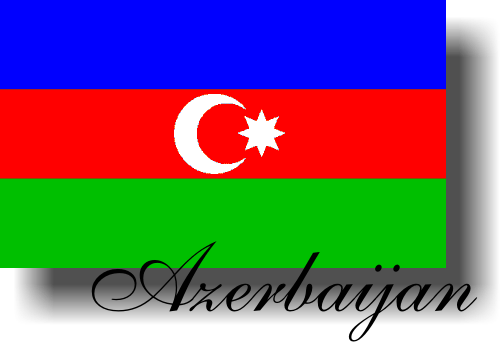Azerbaijan's number one export is oil.
Azerbaijan's oil production declined through 1997 but has registered an increase
every year since. Negotiation of production-sharing arrangements (PSAs) with foreign
firms, which have thus far committed $60 billion to long-term oilfield development,
should generate the funds needed to spur future industrial development. Oil production
under the first of these PSAs, with the Azerbaijan International Operating Company,
began in November 1997. Azerbaijan shares all the formidable problems of the former
Soviet republics in making the transition from a command to a market economy, but
its considerable energy resources brighten its long-term prospects. Baku has only
recently begun making progress on economic reform, and old economic ties and structures
are slowly being replaced. One obstacle to economic progress is the need for stepped up
foreign investment in the non-energy sector. A second obstacle is the continuing conflict
with Armenia over the Nagorno-Karabakh region. Trade with Russia and the other former
Soviet republics is declining in importance while trade is building with Turkey and
the nations of Europe. Long-term prospects will depend on world oil prices, the location
of new pipelines in the region, and Azerbaijan's ability to manage its oil wealth.
Gross Domestic Product (GDP) composition by sector:
agriculture 14.1%, industry 45.7%, services 40.2% (2002)
Labor force (by occupation): industry 7%,
agriculture 41%, services 52% (2001)
Unemployment rate: 16% (2003)
Industries: petroleum and natural gas, petroleum products,
oilfield equipment; steel, iron ore, cement; chemicals and petrochemicals;
textiles
Agriculture - products: cotton, grain, rice, grapes,
fruit, vegetables, tea, tobacco; cattle, pigs, sheep, goats
Exports - commodities: oil and gas 90%, machinery, cotton,
foodstuffs
Exports - partners: Italy 30.1%, Germany 15.5%, Czech
Republic 10.8%, France 8.8%, Georgia 7%, Russia 4.9% (2002)
Imports - commodities: machinery and equipment,
oil products, foodstuffs, metals, chemicals
Imports - partners: Russia 16.8%, Turkey 13.5%,
Germany 7.4%, Kazakhstan 6.8%, France 6.5%, Ukraine 6.3%, China 5.7%, UK 5.1%,
US 4.2% (2002)

